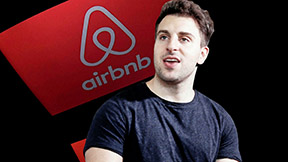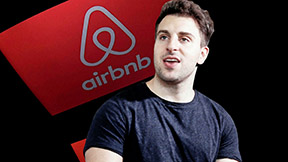
Have you ever wondered why certain individuals can spot potential where others see nothing but challenges? These are the ones who seem to have a sixth sense for sniffing out opportunities. The secret isn’t a mystical power – it’s a skill, and one that’s grounded in our very own biology. Welcome to the world where we ‘SEEz Opportunities’.
Spotting Opportunities:
The Power of Your Brain
Seeing opportunities isn’t an exclusive gift only bestowed upon a lucky few. It’s a skill, akin to learning to play the guitar or mastering the art of public speaking. This skill, however, focuses on your perception, and altering the way you perceive the world around you. It’s about examining situations from multiple perspectives and unveiling hidden gems of potential.
This is where the brain’s Reticular Activating System (RAS) comes into play. The RAS is a bundle of nerves at our brainstem that filters out unnecessary information so the important stuff gets through. It’s the reason you hear your name across a noisy room, or why you spot a friend’s face in a crowded street. Your RAS takes what you focus on and creates a filter for it, sieving through the data and presenting only the pieces that are important to you. This means once you’ve set your goals and defined what opportunities you’re seeking, your RAS will work to highlight those opportunities when they arise.
But how do we develop the skill of seeing opportunities? It starts with setting a clear vision. First, identify the types of opportunities you are seeking. Is it a lucrative business deal? A chance to score in a sports match? A potential relationship? A unique travel experience? Just like setting a GPS before a journey, you need to define your destination before setting out to discover opportunities.
The Story of Airbnb

Take the story of Brian Chesky and Joe Gebbia, the founders of Airbnb. In 2007, during an industrial design conference in San Francisco, they noticed that hotels were fully booked. Seeing an opportunity, they decided to rent out their living space to those who couldn’t find accommodation. That idea evolved into Airbnb, a billion-dollar company. [For a more in-depth version of this story see our SEEz Opportunity Stories page.]
Once you’ve identified the type of opportunities you’re searching for, broaden your horizon and delve deep. Look at situations from different perspectives, ask ‘what if’ and dare to dream. The world is full of untapped possibilities waiting to be discovered.
Challenge Yourself:
A Different Lens for Perception
To truly develop this skill, challenge yourself to view your world through a new lens. Each experience, encounter, and event harbors potential opportunities. The key lies in priming your RAS to recognize these opportunities. If you’re an entrepreneur, train your RAS not just to see a product, but a solution to a problem, an enhancement to a process, or an entryway to a new market. If you’re an athlete, instruct your RAS to see beyond the game, towards mastering new techniques, fostering resilience, or uncovering a passion for mentorship.
Consider Howard Schultz, who, during a trip to Italy, was captivated by the country’s coffee culture. He didn’t just see a beverage – he saw an opportunity to bring this Italian experience back to America. This new perspective led him to transform Starbucks from a single coffee bean store into a global coffeehouse chain.
But recognizing an opportunity is merely the first step. Identifying potential is futile if you don’t take proactive measures to seize it.
Act Now: The Bridge to Success
It is action that distinguishes the dreamers from the doers. Transforming an opportunity from potential to reality requires action, often involving courage, dedication, and tenacity. It might mean stepping outside your comfort zone or accepting risks. However, as the adage goes, “Fortune favors the bold.”

A classic example is that of JK Rowling, the renowned author of the Harry Potter series. She saw an opportunity to create a unique magical world, but it was her actions – writing the story, persevering through numerous rejections from publishers – that transformed her vision into a reality, creating a billion-dollar franchise in the process. [For a more in-depth version of this story see our SEEz Opportunity Stories page.]
A simple framework to inspire action:
Chart the Next Step: Each opportunity demands a unique course of action. It might involve research, initiating a conversation, or jumping in headfirst. Regardless, identify the next logical step and take it.
Establish a Timeline: Specify a time frame for action. It could be immediate, within a week, or the next month. A timeline imparts urgency and curbs procrastination.
Assess and Adapt: Following your action, evaluate the outcome. Did it bring you closer to seizing the opportunity? If not, refine your approach and try again. Failure isn’t the enemy of success; it’s part of the journey.
The Art of Seizing Opportunities
Comprehending that seeing opportunities is a skill cultivated through intentional mental training, notably through harnessing your RAS, is transformative. Like any skill, it requires practice, patience, and resilience. However, the payoff is substantial. As you master the art of ‘Seez Opportunities’, you’ll start to perceive the world in a new light, spotting potential in previously overlooked corners and ready to seize these opportunities when they emerge.
Encourage a mindset of curiosity, stay receptive to new experiences, and challenge established norms. Armed with this approach, you’ll not only spot opportunities at every turn but also be primed to seize them, converting your visions into victories.

[For a more in-depth story demonstrating how Stephen Curry made the most of the opportunities he was given (and created many of his own opportunities), see our SEEz Opportunity Stories page.]
Remember, opportunities don’t just materialize out of thin air – they’re identified by those with the bravery to see beyond the surface and the commitment to act. So, equip yourself with the correct mindset, sharpen your perception, and get ready to ‘Seez Opportunities’ that will lead you to success. After all, it’s not merely about what you look at, but rather, what you see through the powerful lens of your RAS.



